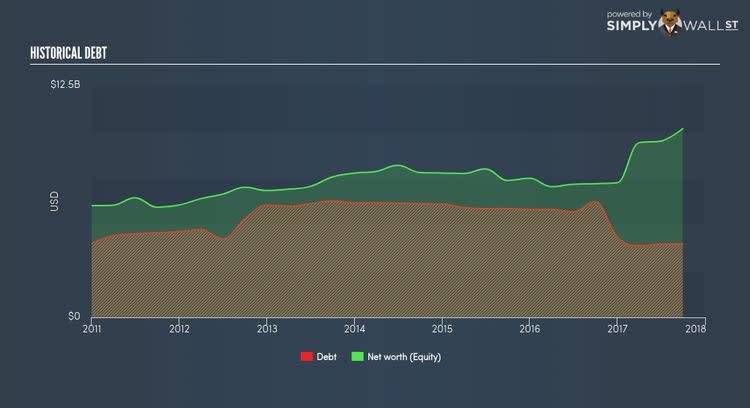What You Must Know About Air Products and Chemicals Inc’s (APD) Return on Equity

Air Products and Chemicals Inc (NYSE:APD) generated a below-average return on equity of 13.28% in the past 12 months, while its industry returned 14.58%. APD’s results could indicate a relatively inefficient operation to its peers, and while this may be the case, it is important to understand what ROE is made up of and how it should be interpreted. Knowing these components could change your view on APD’s performance. Today I will look at how components such as financial leverage can influence ROE which may impact the sustainability of APD’s returns. Check out our latest analysis for Air Products and Chemicals
Breaking down Return on Equity
Return on Equity (ROE) weighs APD’s profit against the level of its shareholders’ equity. An ROE of 13.28% implies $0.13 returned on every $1 invested. While a higher ROE is preferred in most cases, there are several other factors we should consider before drawing any conclusions.
Return on Equity = Net Profit ÷ Shareholders Equity
Returns are usually compared to costs to measure the efficiency of capital. APD’s cost of equity is 10.74%. Some of APD’s peers may have a higher ROE but its cost of equity could exceed this return, leading to an unsustainable negative discrepancy i.e. the company spends more than it earns. This is not the case for APD which is reassuring. ROE can be split up into three useful ratios: net profit margin, asset turnover, and financial leverage. This is called the Dupont Formula:
Dupont Formula
ROE = profit margin × asset turnover × financial leverage
ROE = (annual net profit ÷ sales) × (sales ÷ assets) × (assets ÷ shareholders’ equity)
ROE = annual net profit ÷ shareholders’ equity
The first component is profit margin, which measures how much of sales is retained after the company pays for all its expenses. The other component, asset turnover, illustrates how much revenue APD can make from its asset base. The most interesting ratio, and reflective of sustainability of its ROE, is financial leverage. Since ROE can be inflated by excessive debt, we need to examine APD’s debt-to-equity level. The debt-to-equity ratio currently stands at a low 38.91%, meaning APD still has headroom to borrow debt to increase profits.
What this means for you:
Are you a shareholder? While APD exhibits a weak ROE against its peers, its returns are sufficient enough to cover its cost of equity, which means its generating value for shareholders. Since ROE is not inflated by excessive debt, it might be a good time to add more of APD to your portfolio if your personal research is confirming what the ROE is telling you. If you’re looking for new ideas for high-returning stocks, you should take a look at our free platform to see the list of stocks with Return on Equity over 20%.
Are you a potential investor? If you are considering investing in APD, looking at ROE on its own is not enough to make a well-informed decision. I recommend you do additional fundamental analysis by looking through our most recent infographic report on Air Products and Chemicals to help you make a more informed investment decision.
To help readers see pass the short term volatility of the financial market, we aim to bring you a long-term focused research analysis purely driven by fundamental data. Note that our analysis does not factor in the latest price sensitive company announcements.
The author is an independent contributor and at the time of publication had no position in the stocks mentioned.


